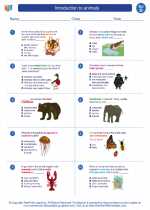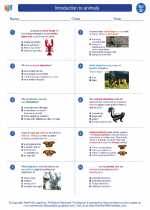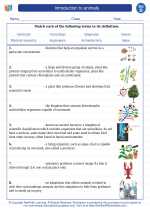Forests
A forest is a large area covered chiefly with trees and undergrowth. Forests play a vital role in maintaining ecological balance and are home to a diverse range of plant and animal species. They also provide numerous benefits to humans, including clean air, water, and recreational opportunities.
Types of Forests
Forests can be classified into several types based on their characteristics:
- Tropical Rainforests: These forests are located near the equator and receive high amounts of rainfall throughout the year. They are known for their incredible biodiversity and dense vegetation.
- Temperate Forests: Found in regions with distinct seasons, temperate forests have a wide variety of deciduous and evergreen trees. They experience moderate rainfall and temperature fluctuations.
- Boreal Forests: Also known as taiga, these forests are found in the northern hemisphere and are characterized by coniferous trees adapted to cold climates.
- Montane Forests: These forests occur in mountainous regions and exhibit unique adaptations to high altitudes, such as stunted tree growth and specialized plant species.
Importance of Forests
Forests offer a multitude of benefits to the environment and society:
- Biodiversity: Forests support a wide array of plant and animal species, contributing to the planet's biodiversity.
- Climate Regulation: Trees absorb carbon dioxide and release oxygen, playing a crucial role in mitigating climate change.
- Water Cycle: Forests help regulate the water cycle by absorbing and releasing water through transpiration and evaporation.
- Resource Provision: They serve as a source of timber, medicinal plants, and various non-timber forest products.
- Recreation and Tourism: Forests offer opportunities for outdoor activities, nature-based tourism, and relaxation.
Threats to Forests
Despite their significance, forests are facing numerous threats, including:
- Deforestation: The clearing of forests for agriculture, urbanization, and industrial activities leads to habitat loss and ecosystem degradation.
- Climate Change: Rising temperatures, altered precipitation patterns, and extreme weather events pose significant challenges to forest ecosystems.
- Wildlife Poaching and Illegal Logging: Unregulated hunting and logging activities threaten the survival of many species and contribute to forest degradation.
- Forest Fires: Both natural and human-induced fires can cause extensive damage to forests, leading to loss of habitat and biodiversity.
Study Guide
To study the topic of forests effectively, consider the following key points:
- Identify and describe the main types of forests, including their geographical distribution and unique characteristics.
- Explain the ecological importance of forests in terms of biodiversity conservation, climate regulation, and water cycle maintenance.
- Analyze the human impacts on forests, such as deforestation, climate change, and unsustainable resource extraction.
- Discuss the measures and initiatives aimed at forest conservation and sustainable management, including reforestation and protected area establishment.
- Explore the role of forests in providing ecosystem services and supporting the livelihoods of local communities.
◂Science Worksheets and Study Guides Fourth Grade. Introduction to animals
Study Guide Introduction to animals
Introduction to animals  Worksheet/Answer key
Worksheet/Answer key Introduction to animals
Introduction to animals  Worksheet/Answer key
Worksheet/Answer key Introduction to animals
Introduction to animals  Worksheet/Answer key
Worksheet/Answer key Introduction to animals
Introduction to animals  Vocabulary/Answer key
Vocabulary/Answer key Introduction to animals
Introduction to animals  Vocabulary/Answer key
Vocabulary/Answer key Introduction to animals
Introduction to animals  Vocabulary/Answer key
Vocabulary/Answer key Introduction to animals
Introduction to animals  Vocabulary/Answer key
Vocabulary/Answer key Introduction to animals
Introduction to animals 

 Worksheet/Answer key
Worksheet/Answer key
 Worksheet/Answer key
Worksheet/Answer key
 Worksheet/Answer key
Worksheet/Answer key
 Vocabulary/Answer key
Vocabulary/Answer key
 Vocabulary/Answer key
Vocabulary/Answer key
 Vocabulary/Answer key
Vocabulary/Answer key
 Vocabulary/Answer key
Vocabulary/Answer key

The resources above cover the following skills:
Concepts of Life Science (SC1, SC2, SC3)
The student demonstrates an understanding of how science explains changes in life forms over time, including genetics, heredity, the process of natural selection and biological evolution by showing the relationship between physical characteristics of Alaskan organisms and the environment in which they live.